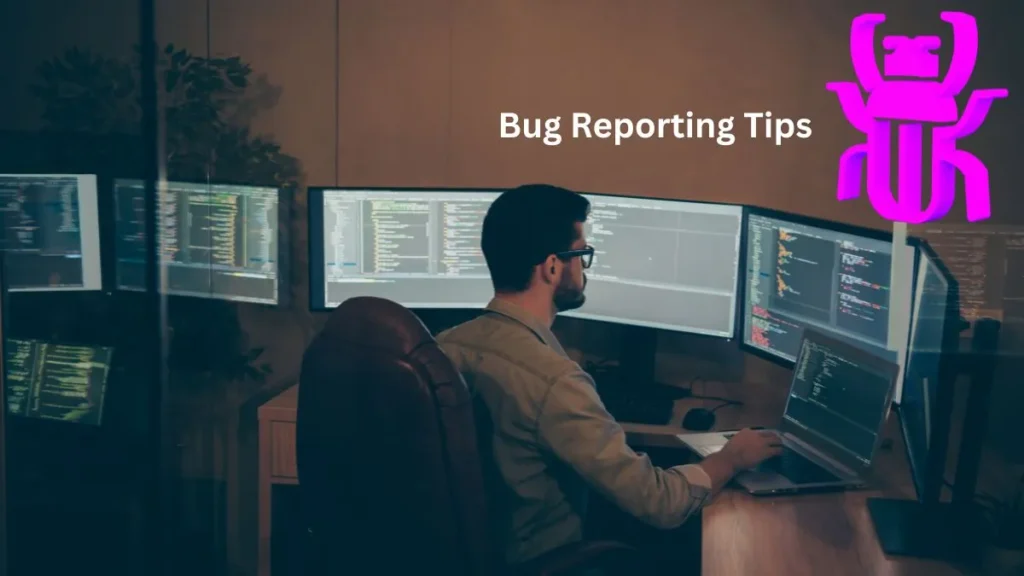Gaming app testing is a crucial phase in the development cycle that ensures players’ quality and smooth gameplay experience. One essential aspect of game testing is bug reporting, where testers effectively communicate the issues they encounter to developers. This blog will explore the art of bug reporting in-game testing and valuable tips and tricks to enhance the process.
Contents
- 1. Understand the Importance of Clear and Detailed Bug Reports
- 2. Provide Reproducible Steps
- 3. Include Videos or Screenshots
- 4. Prioritize and Classify Bugs
- 5. Include System Specifications
- 6. Use a Consistent Bug Reporting Format
- 7. Avoid Assumptions and Provide Context
- 8. Collaborate and Communicate
- 9. Update and Verify Bug Fixes
- Conclusion
1. Understand the Importance of Clear and Detailed Bug Reports
Developers rely on efficient bug reporting to fully comprehend and resolve issues promptly. It’s crucial for effective communication and problem-solving. Clear and detailed bug reports significantly increase the chances of bugs getting fixed promptly. When reporting a bug, include essential information such as:
- Platform: Specify the platform or operating system on which the bug occurred (e.g., Windows, macOS, iOS, Android).
- Device: Mention the device used for testing (e.g., PC, smartphone, tablet) and its specifications if relevant.
- Game Version: Provide the game’s specific version or build number where the bug was encountered.
- Steps to Reproduce: Please provide a detailed list of the necessary steps to replicate the bug. Provide specific actions, in-game locations, or relevant details to help recreate the bug.
2. Provide Reproducible Steps
To ensure developers can replicate the bug consistently, provide step-by-step instructions on reproducing it. Include:
- Specific Actions: Detail the actions taken before the bug, such as navigating menus, interacting with objects, or triggering specific events.
- In-Game Locations: Specify the areas or levels where the bug will likely manifest.
- Relevant Context: Describe any preconditions or specific scenarios required to reproduce the bug.
The more precise the steps, the higher the chances of a quick resolution.
3. Include Videos or Screenshots
Visual aids are beneficial in bug reporting. Capture images or record videos that showcase the bug in action. Highlight:
- User Interface Anomalies: Include screenshots of UI glitches, overlapping elements, or incorrect visual representations.
- Graphical Issues: Capture images of graphical artifacts, texture problems, rendering errors, or lighting discrepancies.
Visual evidence provides clarity and helps developers visualize the problem more effectively.
4. Prioritize and Classify Bugs
When conducting tests within the game, it is of utmost importance to categorize and rank any glitches according to their severity level and how they affect the gameplay experience. Categorize bugs as:
- Critical: Bugs that cause game crashes, major functionality issues, or severe gameplay disruptions.
- Major: Bugs that impact gameplay, user experience, or game progression but do not cause crashes.
- Minor: Minor issues like typos, minor graphical glitches, or non-game-breaking UI problems.
Additionally, clearly describe the bug’s impact on gameplay, performance, or user experience.
5. Include System Specifications
Game development involves various hardware and software configurations. When reporting a bug, mention your system specifications, including:
- Operating System: Specify the version of the operating system used for testing.
- Hardware Components: Provide information about the CPU, GPU, RAM, and other relevant hardware components.
- Software Versions: Mention the versions of any supporting software or drivers that might be relevant.
This information helps developers identify and troubleshoot bugs specific to certain configurations.
6. Use a Consistent Bug Reporting Format
Adopting a consistent bug reporting format streamlines the bug management process. Utilize a template or predefined structure to ensure uniformity across bug reports. Include sections for:
- Bug Title: Provide a concise and descriptive title that summarizes the bug.
- Description: Explain the bug in detail, including the observed behavior and its impact on the game.
- Steps to Reproduce: Please provide a detailed list of the necessary actions to replicate the previously mentioned issue.
- Expected Behavior: Describe what should happen in the game under normal circumstances.
- Actual Behavior: Explain what occurs when the bug manifests.
- System Specifications: Include the relevant system specifications as discussed above.
- Notes and Attachments: Add any notes or attachments that might help understand or resolve the bug.
7. Avoid Assumptions and Provide Context
Avoid making assumptions about the cause or underlying issues when reporting a bug. Stick to the observed behavior and refrain from speculating about the technical aspects. However, provide relevant contextual information that might help in bug reproduction or resolution.
8. Collaborate and Communicate
Effective communication is crucial for successful bug resolution. Engage in constructive discussions, clarify any ambiguities, and respond promptly to developers’ queries or requests for additional information. Collaboration fosters a better understanding of the bug’s root cause and facilitates faster fixes.
9. Update and Verify Bug Fixes
Stay involved in the bug-fixing process by updating and verifying bug fixes. After a developer addresses a reported bug, test the fix thoroughly to ensure the issue has been resolved completely. Provide feedback to confirm the resolution and close the bug report accordingly.
Conclusion
Reporting bugs effectively in game testing is a highly beneficial skill for testers. By understanding the importance of clear and detailed bug reports, providing reproducible steps, utilizing visual aids, and maintaining effective communication with developers, testers can contribute significantly to the game’s overall quality. Adopting these tips and tricks will streamline the bug-reporting process and help create a smoother gaming experience for players.
Testers can also test audio video for games with software testing tools like HeadSpin. These tools can help overcome any testing challenges that you experience. Remember, a well-crafted bug report is essential for developers to identify and resolve issues efficiently, ultimately leading to a more polished and enjoyable gaming experience.

